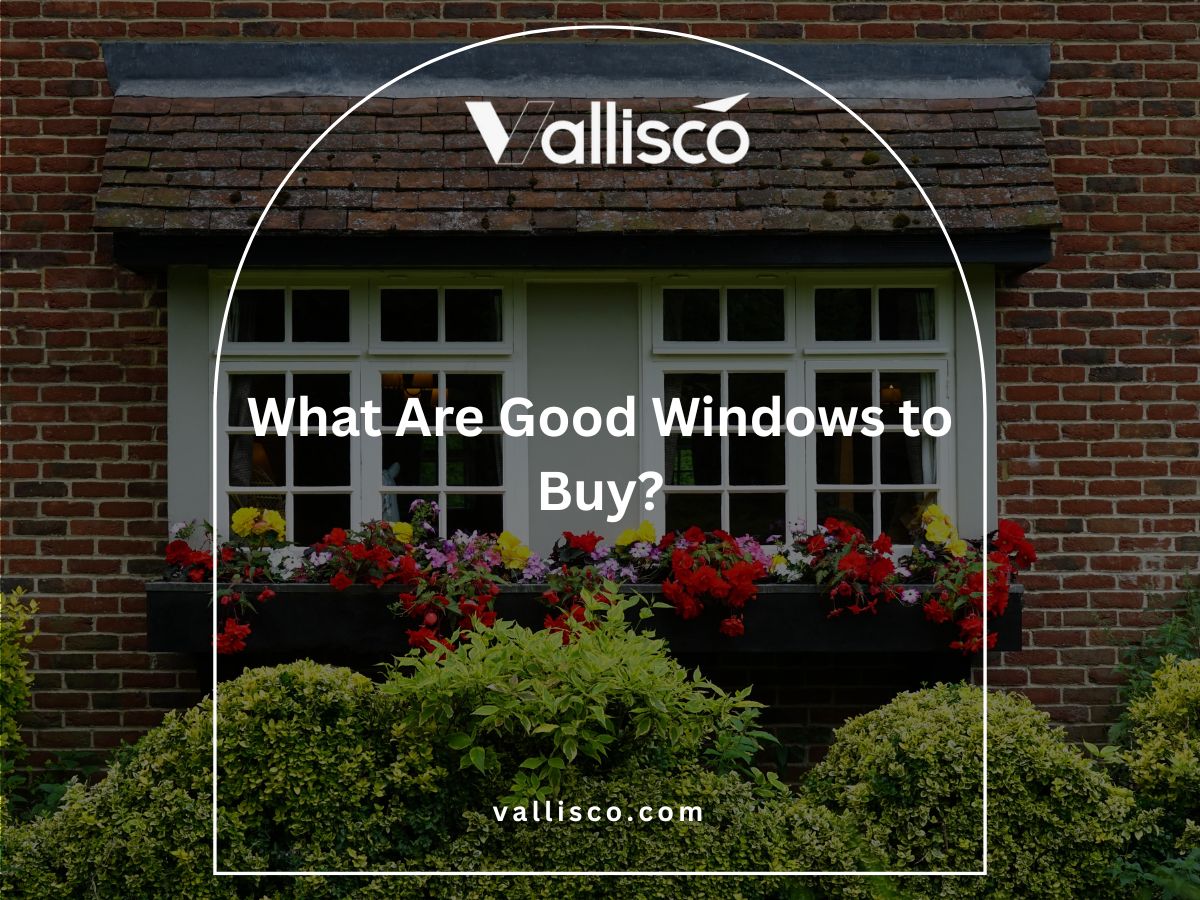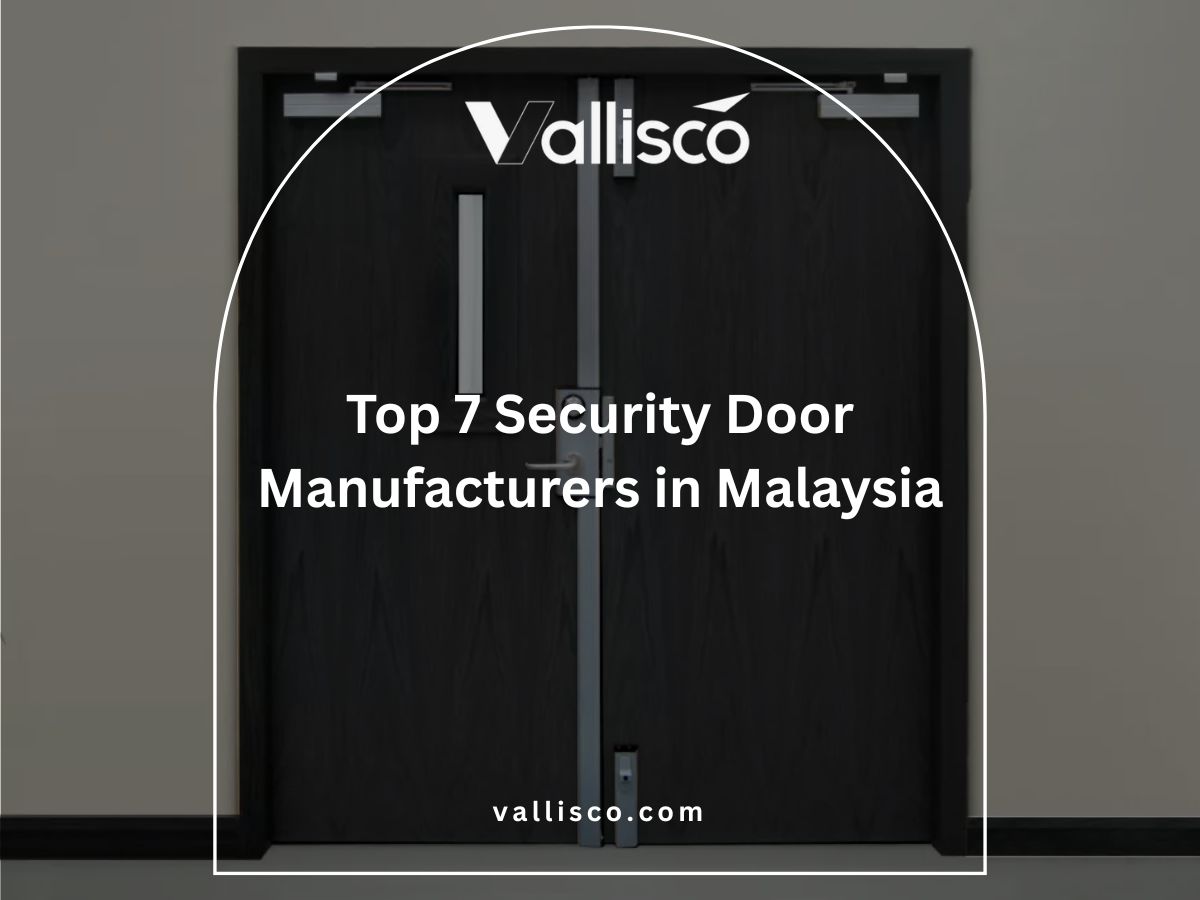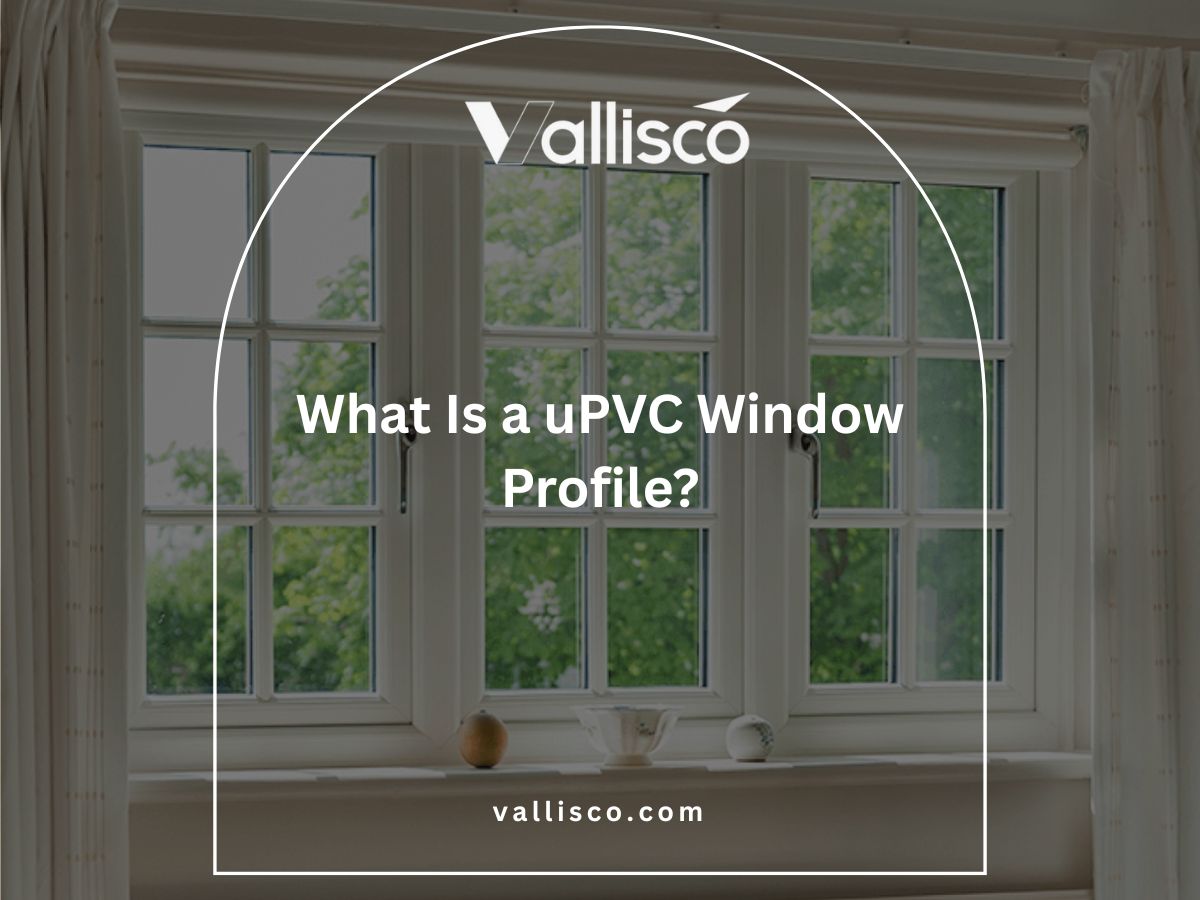I once stayed in a luxury hotel with doors that looked stunning but wouldn’t close properly. Guests were frustrated, and the manager was losing sleep.
That experience stuck with me. Something as basic as a door could affect the entire guest experience and brand reputation.
Having consulted for multiple hotel renovation projects, I’ve seen the impact the right (or wrong) door can have on operations, guest satisfaction, and even energy costs. My recommendations are based on hands-on results.
In this review, I’ll share 8 types of hotel door ideas, complete with their strengths, drawbacks, and ideal applications so you can choose with clarity and confidence.
Because when guests step through the right door, they’re already half convinced they made the right booking.
So, let’s begin!
Quick Comparison Chart
I’ve worked with enough hotel projects to know that doors are never “just doors.” They affect guest comfort, safety, and how your property is perceived. Below is a quick side-by-side comparison of the 8 types we’ve covered, so you can see at a glance which ones fit your goals best.
| Door Type | Key Features | Benefits | Limitations | Ideal For | Fire-Rated? |
| Classic Wooden Entry Doors | Solid-core wood, custom finishes, soundproofing | Premium look, durable, refinishable | Higher cost, heavy install | Upscale hotels | Yes |
| Fire-Rated Safety Doors | Certified ratings, heat-resistant cores, smoke seals | Code compliant, slows fire, insurance-friendly | Heavy, special hardware | All hotels for safety | Yes |
| Sliding Glass Patio Doors | Tempered glass, smooth track, UV protection | Light, views, modern feel | Maintenance, climate limits | Resorts, balcony rooms | No |
| Modern Keycard Entry Doors | RFID/mag stripe, integrated locks, software link | Fast access, secure, modern image | Needs upkeep, tech issues | Mid/high-end hotels | Yes* |
| Barn-Style Bathroom Doors | Sliding track, space-saving, custom panels | Stylish, saves space | Low soundproofing | Boutique hotels | No |
| Mirror-Finish Closet Doors | Full-length mirror, sliding/bifold | Adds space, modern look | Smudges, fragile | Small/mid rooms | No |
| Frosted Glass Doors | Translucent glass, framed/frameless | Light + privacy, modern | Not fully opaque | Modern/spa hotels | No |
| Double French Doors | Dual-hinged, glass inserts | Bright, elegant, flexible | Needs space, cleaning | Suites, premium rooms | No |
For more detailed descriptions, real-world use cases, and professional tips, read below for the full breakdown of each hotel door type.
1. Classic Wooden Entry Doors
I once toured a hotel project during the final stages of construction. Everything looked polished, until I noticed the guest room entry doors. They had gone with a cheap, hollow-core model from another supplier, and the whole corridor felt more like an apartment complex than a hotel.
That’s exactly the kind of issue we help our clients avoid. When hotels want their entryways to reflect warmth, durability, and class, classic wooden doors are often the go-to. Here’s why these doors still stand out in a crowded market:
Key Features
- Solid-Core Construction: These doors are crafted from dense hardwoods like oak, walnut, or ash, giving them a strong, sturdy feel. Unlike hollow doors, they resist warping and offer long-term durability.
- Custom Veneers and Finishes: Choose from natural stains, painted finishes, or high-pressure laminates to match your interior aesthetic. Each veneer option can be tailored to suit modern, rustic, or traditional hotel styles.
- Acoustic Upgrade Options: Optional sound-insulating cores help block out hallway noise, which is a common source of guest complaints. This makes them ideal for properties focused on quiet luxury.
- Hardware-Ready Design: These doors are engineered to work with most commercial-grade locks and access systems. That includes everything from lever handles to RFID-enabled keycard setups.
- Fire-Rated Configurations: They’re available in fire-rated models that meet 20-, 45-, or even 90-minute code requirements. You get peace of mind and safety without sacrificing design.
Benefits
- Premium Guest Experience: The moment guests step onto the floor, a solid wood entry door makes a strong first impression. It sets the tone for the room’s comfort and quality.
- Enhanced Soundproofing: The weight and composition of the door help muffle hallway chatter and elevator noise. This means fewer disturbances and better sleep quality for guests.
- Durable Under Heavy Use: These doors are built for high-traffic environments like hotels, resisting scratches, bumps, and daily wear. With proper maintenance, they’ll last for years.
- Supports Brand Identity: Wood doors offer endless customization—from grain patterns to carved accents—so you can match your hotel’s design vision. It’s a subtle but powerful branding tool.
- Refinishable Surface: Unlike many synthetic alternatives, wooden doors can be sanded and refinished if they get scuffed. That gives you more value over time, without replacing the whole unit.

2. Fire-Rated Safety Doors
During one of our consultations, a hotel developer asked if they could “just use the same doors throughout the property.” I had to explain that when it comes to guest room entryways and stairwells, building code doesn’t leave room for shortcuts.
Fire-rated doors are a requirement. These aren’t just regulatory boxes to check. They are essential safety tools in the hospitality world. Let’s break down what makes these doors a must-have for any hotel project:
Key Features
- Certified Fire Ratings: You can choose from 20-, 45-, 60-, or 90-minute models depending on your project’s safety plan. Each one is lab-tested and labeled to meet local and international fire codes.
- Core Materials That Resist Heat: Most fire-rated doors are built with mineral cores, steel, or composite fireboards. These inner layers keep the structure intact under extreme heat and delay fire spread.
- Smoke Seals and Intumescent Strips: These expand in response to heat, sealing gaps around the door to block smoke and flames. It’s a small feature that can make a life-saving difference.
- Hardware Compatibility: Fire-rated models are fully compatible with closers, panic bars, and commercial locksets. All hardware used must be fire-rated and tested together as a system.
- Surface Finish Flexibility: You’re not locked into an industrial look. Vallisco’s fire rated safety doors come in veneer, laminate, or even custom-painted options.
Benefits
- Fulfills Code Compliance: Most hotels are legally required to use fire-rated doors in corridors, stair towers, and guest entries. Installing the right models keeps your project inspection-ready.
- Improves Emergency Response Time: These doors help contain fire and smoke for precious extra minutes. That gives guests and staff a safer path to exit and first responders a better chance to intervene.
- Reduces Damage Spread: By slowing the fire, these doors limit how far and fast damage can go. That can save you thousands in restoration costs.
- Eases Insurance Requirements: Many insurers will not even quote a policy without proof of rated door systems. Having them in place also helps with claims and coverage terms.
- Balances Safety and Design: With modern finishing options, you can maintain a cohesive aesthetic throughout the property. You do not have to choose between compliance and design quality.
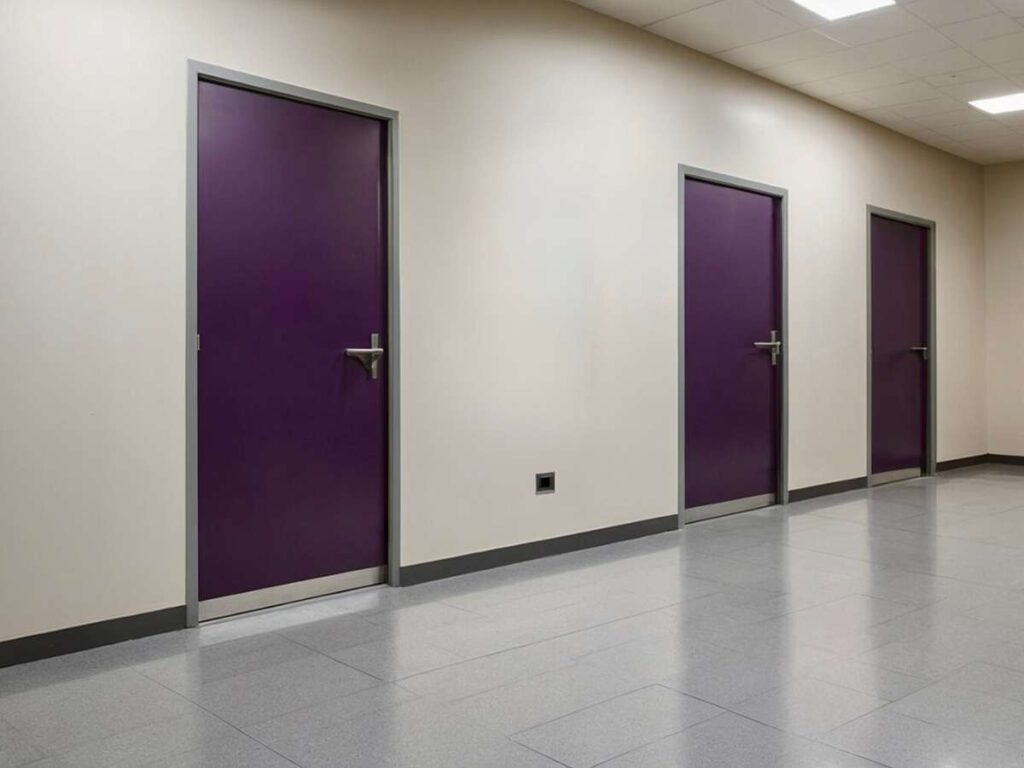
3. Sliding Glass Patio Doors
Not long ago, I visited a seaside hotel during a renovation phase. The rooms had fantastic views, but the old, foggy sliding doors barely opened and felt like an afterthought.
That’s the kind of detail guests remember. If your property includes balconies, terraces, or garden access, sliding glass patio doors are one of the best ways to connect indoor comfort with outdoor appeal. Let’s look at why these doors make such a difference in guest satisfaction and design:
Key Features
- Tempered Safety Glass: Panels are made from tempered or laminated glass for strength and guest protection. This type of glass resists breakage and shatters safely if damaged.
- Smooth Glide Track System: Quality models use stainless steel or aluminum tracks with rollers for quiet, easy movement. Guests can open and close them with minimal effort.
- Thermal and Weather Sealing: Seals around the frame help block drafts, moisture, and outside heat. This keeps the room comfortable and energy costs in check.
- Optional Tints and UV Protection: Glass can include low-E coatings or built-in tints. These features reduce glare and protect furnishings from fading.
- Compatible with Balcony Locks: Many systems allow you to integrate keyed or thumb-turn patio locks. Some even support electronic locking options for added security.
Benefits
- Maximizes Natural Light: Large glass panels flood the room with daylight and make small spaces feel larger. That creates a more inviting and premium guest experience.
- Showcases Exterior Views: Whether it’s an oceanfront or a garden, these doors turn the view into part of the room design. This adds value without major renovation.
- Boosts Room Appeal Instantly: Sliding glass doors give the space a more modern and open feel. They are especially popular in suites or upgraded room tiers.
- Improves Airflow and Ventilation: On cooler days, guests can open the door for fresh air instead of using HVAC. This offers comfort and energy savings.
- Increases Property Value: Hotels with upgraded patio access tend to perform better on the market. These doors are a high-impact, guest-facing feature.

4. Modern Keycard Entry Doors
I’ve worked with hotels that still used manual keys or old swipe locks, and the feedback was always the same. Guests got frustrated, staff had to deal with constant reissues, and security became harder to manage.
That’s why we always recommend upgrading to modern keycard entry doors if you want to keep things smooth, safe, and up to today’s standards. Let me show you what makes these systems so useful for hotel owners and developers.
Key Features
- RFID or Magnetic Stripe Access: These systems use cards that unlock the door with a tap or swipe. RFID models tend to last longer and read more reliably, which means fewer complaints at the front desk.
- Integrated Locking Systems: The locking hardware is built into the handle or edge of the door. It looks cleaner and is harder to tamper with compared to bolt-on components.
- Battery or Hardwired Power: Most locks run on long-lasting batteries, but some hotels prefer hardwired systems. Either way, we make sure there’s a backup to prevent downtime.
- Access Control Software: You can link these doors to your front desk system for easy card activation, cancellation, or tracking. Some platforms even support mobile keys and digital check-ins.
- ADA-Compliant Design Options: Every property has different accessibility needs. We offer models that meet code requirements while keeping a clean, modern look.
Benefits
- Improves Guest Convenience: Guests want to get in their rooms fast, without fuss. A reliable keycard system gives them that frictionless experience.
- Adds a Layer of Security: Cards can be deactivated instantly if lost or stolen. You also control who has access to certain floors or doors at specific times.
- Eases Front Desk Operations: There’s no need to change locks or cut keys. Staff can reissue a new card in seconds with minimal disruption.
- Elevates the Hotel’s Image: Keycard entry tells guests you’re up to date and paying attention to comfort and safety. It’s a small detail that makes a strong impression.
- Supports Contactless Options: Some systems allow entry with a phone or QR code. That’s becoming a popular request for newer properties and tech-friendly travelers.
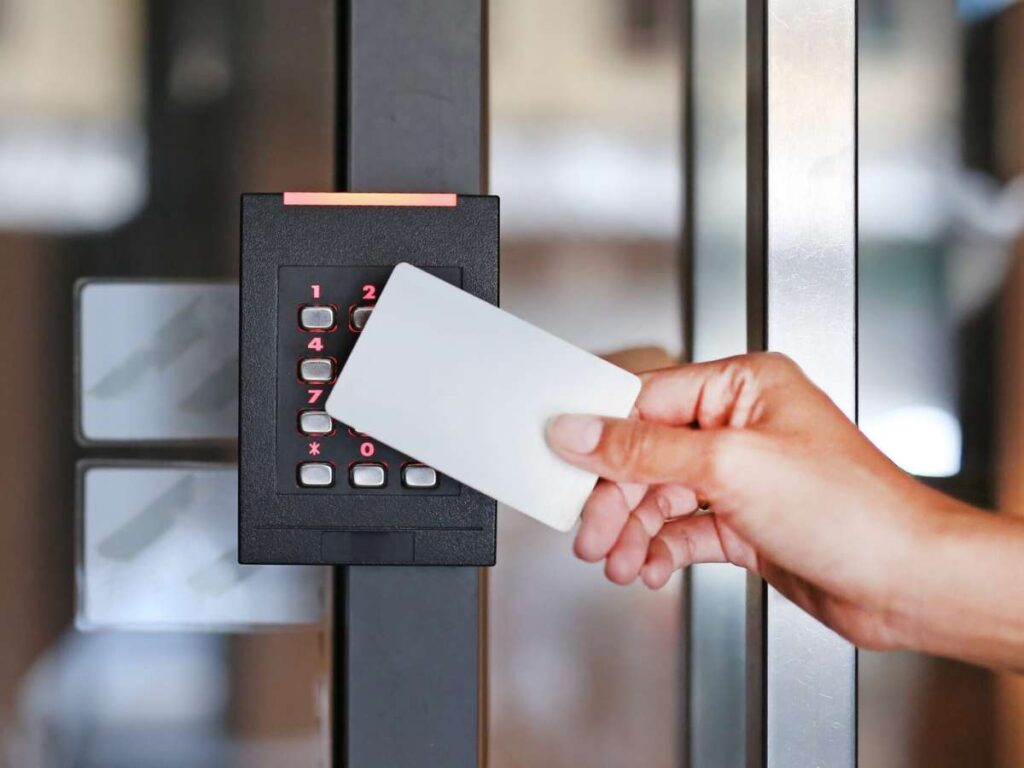
5. Barn-Style Bathroom Doors
One of our hotel clients was redesigning a set of boutique rooms and wanted to add something that felt warm, space-saving, and just a bit different. We suggested barn-style bathroom doors, and it instantly gave the rooms a modern rustic touch without needing major structural changes.
Sliding barn doors have become a favorite in boutique and lifestyle hotels for their blend of charm and function. Here’s what makes them such a practical and design-forward choice for bathroom entrances:
Key Features
- Top-Mounted Sliding Track: The door slides along a track fixed above the doorway. This eliminates the need for floor hinges and keeps the threshold clear for easy cleaning.
- Space-Saving Design: Because the door glides along the wall, it doesn’t swing into the bathroom or guest space. That helps in tight layouts where every inch matters.
- Custom Panel Options: These doors can be made from wood, metal, or even frosted glass panels. We’ve supplied versions with solid cores for privacy or decorative planks for visual interest.
- Soft-Close Mechanisms Available: Add-ons like soft-close hardware prevent slamming and reduce noise. Guests appreciate the quiet, especially during nighttime use.
- Matching Hardware Finishes: Tracks and handles can be powder-coated or matched to other room elements. This helps maintain a consistent style throughout the space.
Benefits
- Adds Character to the Room: Barn doors offer a distinct look that guests tend to remember. They work well in boutique hotels aiming for a modern farmhouse or urban loft vibe.
- Improves Space Efficiency: In compact rooms, swinging doors can eat up valuable clearance. Sliding models let you reclaim floor space without sacrificing privacy.
- Enhances Design Flexibility: These doors are highly customizable. Whether you want a reclaimed wood look or something sleek and painted, the options are wide open.
- Simplifies Maintenance and Repairs: Most components are exposed and easy to access. That makes hardware replacement or adjustments quick and affordable.
- Supports Brand Personality: If your hotel emphasizes charm, uniqueness, or a relaxed luxury feel, these doors help reinforce that image. They’re not just functional—they tell a story.
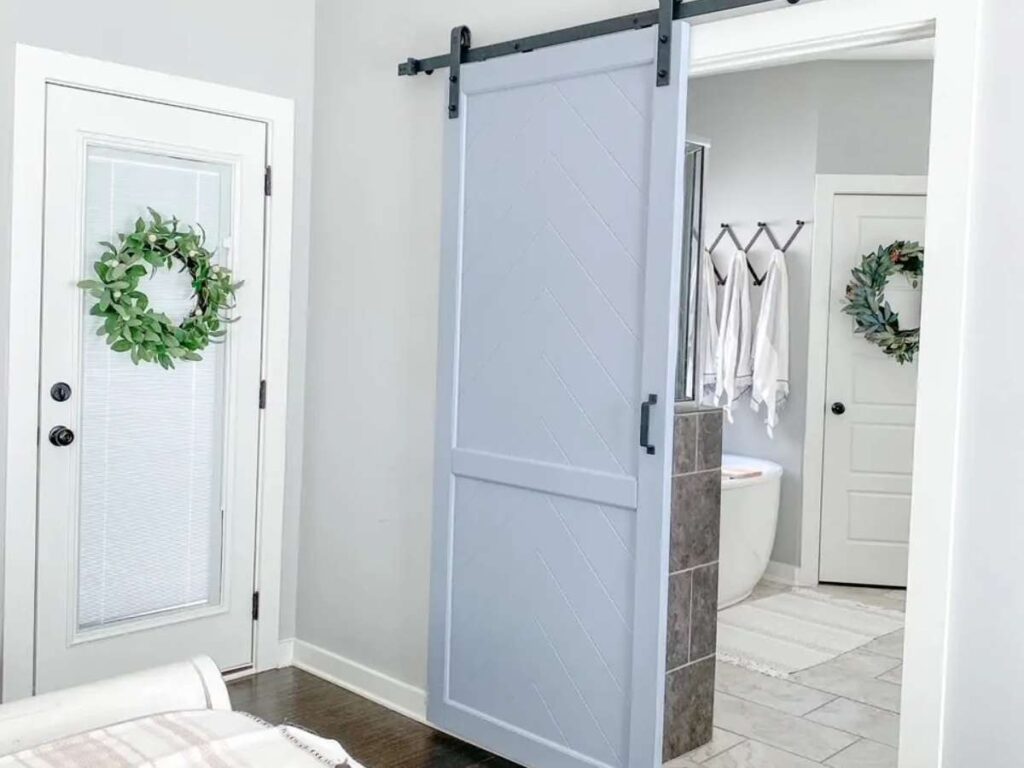
6. Mirror-Finish Closet Doors
We once worked with a hotel group updating their standard rooms to feel more spacious without doing a full renovation. One of the simplest upgrades? Switching out basic closet doors for full-height mirror panels.
Mirror-finish closet doors do more than reflect a clean look—they help solve layout challenges in smaller rooms. Let’s take a closer look at why this simple feature continues to be a popular choice in hospitality projects:
Key Features
- Full-Length Mirrored Panels: Each door includes a high-quality mirror surface, either framed or frameless. This creates a sleek, reflective wall that doubles as a full-body mirror.
- Sliding or Bifold Options: These doors come in different opening styles based on room layout. Sliding models work best in tight spaces, while bifold doors offer wider access to the closet.
- Durable Safety Glass: The mirrored surface is backed with safety film or made from tempered glass. That way, it holds together if damaged and meets hotel safety standards.
- Framing Finish Choices: You can choose from metal, wood-look, or powder-coated frames to match other furnishings. These finishes help the doors blend into the room design or make a bold statement.
- Easy Integration with Closet Systems: These doors can be paired with standard or custom closet interiors. They slide or fold smoothly and stay functional even with regular use.
Benefits
- Makes Rooms Feel Larger: Reflective surfaces bounce light and give the illusion of added space. This is especially useful in smaller guest rooms or suites.
- Adds a Polished, Upscale Look: Mirror doors instantly modernize the room’s appearance. Guests often notice the difference without even realizing why.
- Provides Practical Functionality: Guests get a full-length mirror without taking up wall space. That improves comfort and convenience without clutter.
- Reduces Wall Decor Costs: With a mirror built into the closet, there’s less need for extra fixtures. That keeps your design budget efficient.
- Supports Quick Visual Checks: Before heading out, guests can easily check their appearance. It’s a small but thoughtful touch that adds to the overall guest experience.
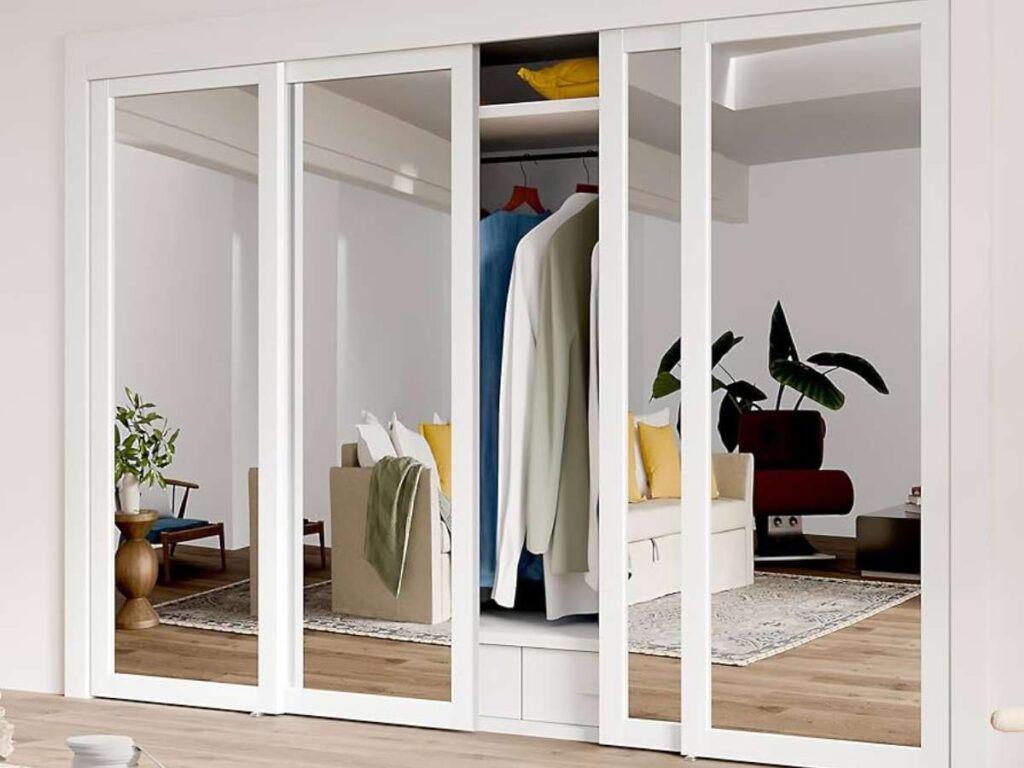
7. Frosted Glass Doors
One of our hotel renovation clients wanted to brighten their bathrooms without giving up privacy. The solution we proposed—and installed—was simple and effective: frosted glass doors.
Frosted glass strikes a great balance between openness and discretion, making it ideal for both bathrooms and partitioned areas. Here’s why more hotel owners are choosing frosted glass doors as a functional design element:
Key Features
- Translucent Surface Finish: These doors allow light to pass through while obscuring visibility. The frosting effect can be etched, sandblasted, or film-applied depending on your needs.
- Privacy Without Darkness: Unlike solid doors, Vallisco’s frosted glass softens light but still creates a clear visual barrier. It keeps the space feeling open without exposing the interior.
- Framed or Frameless Options: Choose clean, frameless panels for a sleek look or go with framed edges for more structure. We offer both styles to suit different architectural needs.
- Tempered Safety Glass: All frosted doors use toughened glass for guest safety. Even in the rare case of breakage, the glass stays in place and prevents injury.
- Custom Shapes and Sizes: We can cut and finish the glass to match sliding tracks, swing doors, or partitions. Every piece is made to fit the space perfectly.
Benefits
- Creates a Light-Filled Space: These doors let natural or artificial light move between areas. That helps small bathrooms or entry zones feel less enclosed.
- Supports Modern Aesthetics: Frosted glass pairs well with contemporary design themes. It gives the room a polished, spa-like finish.
- Enhances Guest Privacy: Guests appreciate when bathrooms feel private without feeling boxed in. This solution delivers both form and function.
- Low Maintenance Surface: The frosted finish hides smudges better than clear glass. A simple wipe-down keeps it looking clean and crisp.
- Easy to Pair with Other Materials: Frosted glass works well alongside tile, wood, and metal. That makes it a flexible addition to any hotel design palette.
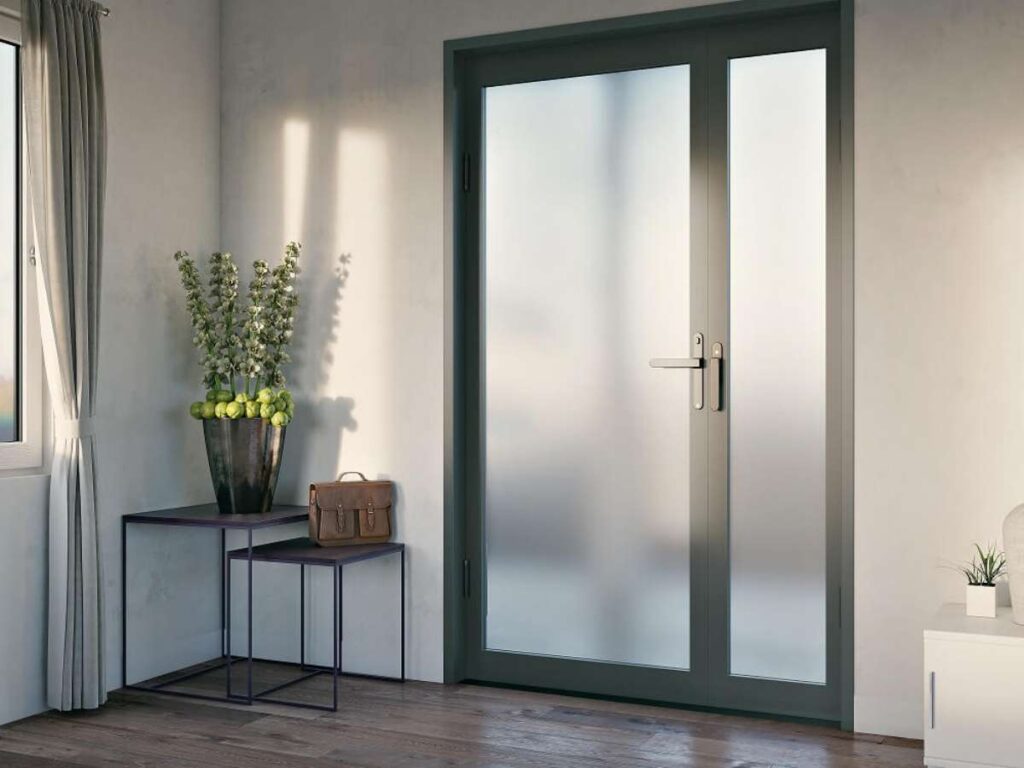
8. Double French Doors
One client asked us how to make their suites feel more open without losing the ability to close off the bedroom from the lounge area. We recommended double French doors with frosted glass panels, and it changed the whole atmosphere—more light, more style, and better space division.
French doors aren’t just decorative. Here’s why hotel designers often turn to this option when they want openness, elegance, and flexibility in one simple upgrade.
Key Features
- Dual-Hinged Panels: Both doors swing open from the center, creating a wide, inviting entryway. This setup works well between living areas, bedrooms, or even entry zones.
- Glass Pane Inserts: The doors typically include multiple glass panes, which can be clear, frosted, or tinted. This adds natural light while still giving you control over privacy levels.
- Customizable Frames: French doors come in wood, aluminum, or composite materials. Finishes can be selected to match flooring, trim, or other room features.
- Optional Locking Hardware: Doors can include latches, deadbolts, or concealed hardware for added function. We offer hardware kits that match both style and security needs.
- Multiple Size Configurations: French doors can be sized for standard or oversized openings. We can also provide sidelights or transoms for a more dramatic look.
Benefits
- Makes Spaces Feel Larger and Brighter: The glass inserts allow rooms to share light and feel more connected. This is a big plus in suites and extended-stay rooms.
- Adds a Premium Visual Element: French doors signal elegance and attention to design. Guests immediately notice the upgrade compared to standard partitions.
- Improves Flexibility Between Zones: These doors let you divide or open up spaces as needed. That’s useful in multi-room layouts or shared guest areas.
- Easy to Customize by Style: Whether the theme is classic, modern, or rustic, French doors can be adapted with the right trim and finish. They’re versatile and timeless.
- Supports Higher Guest Satisfaction: Better flow, more light, and thoughtful design features all contribute to stronger reviews. Guests appreciate when a space feels carefully planned.
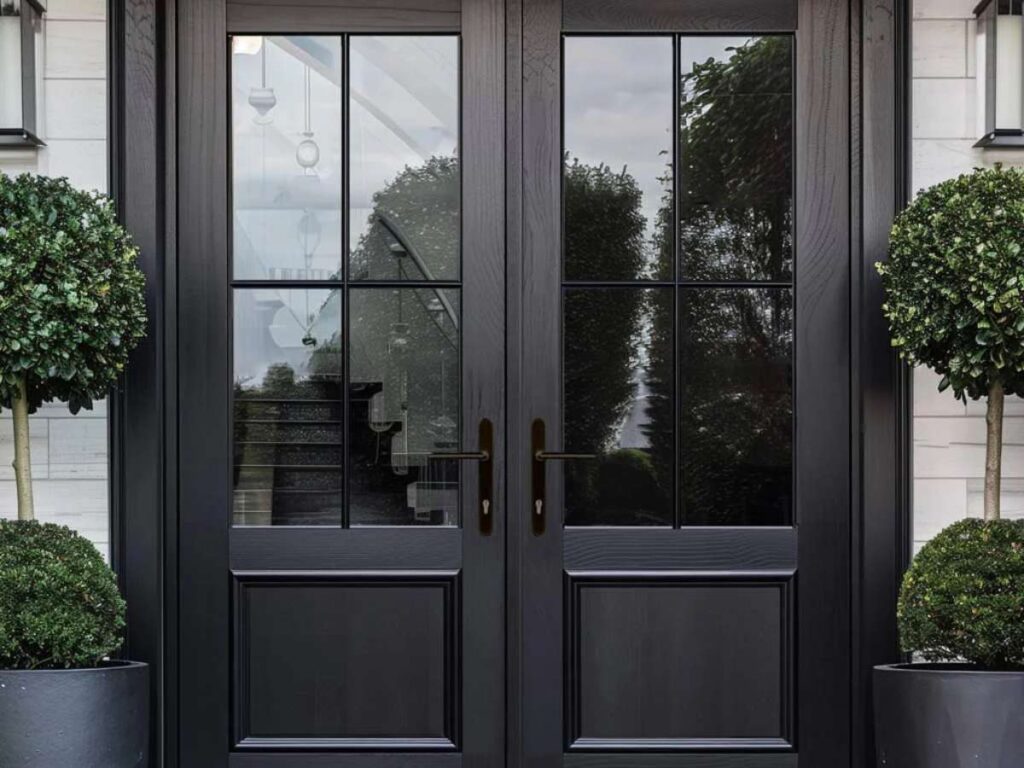
Factors to Consider When Choosing a Hotel Door
The right hotel door isn’t just about design; it’s about blending functionality, compliance, and brand image. When you weigh these factors carefully, you avoid costly mistakes and create an experience that guests remember for the right reasons.
Security and Safety Standards
Your guests trust you to keep them safe, and your door choice plays a big role in that promise. Look for doors that meet fire safety ratings, have strong locking systems, and comply with local building codes. In high-traffic areas like guest rooms and main entrances, durability against forced entry is essential.
A secure door not only protects guests but also protects your investment. It’s not just about meeting regulations, it’s about delivering peace of mind.
Durability and Maintenance
In hotels, doors see constant use, which means they need to handle wear and tear without losing their function or appearance.
Materials like solid wood, metal, or high-quality composite can offer better longevity. Consider finishes that resist scratches and stains, especially in busy corridors. Doors that require minimal maintenance save you time, labor, and repair costs in the long run. Think of it as an upfront investment that pays off year after year.
Aesthetic and Brand Fit
A hotel’s door is part of its identity. The style, color, and finish should complement your overall theme, whether you are aiming for sleek and modern, warm and rustic, or classic elegance. Consistency across your property helps create a strong brand image that guests will remember.
It’s not about picking the “prettiest” door, it’s about finding one that tells your brand’s story from the moment a guest arrives. The right match can subtly influence how guests perceive the quality of your entire property.
Guest Experience and Accessibility
Your doors should be easy to open, close, and lock for all guests, including those with disabilities or limited mobility. Smooth operation, quiet hinges, and soundproofing features can enhance guest comfort. In-room doors should block noise effectively, while main entry doors might need to handle heavy foot traffic without creating bottlenecks.
Do not overlook accessibility standards like ADA compliance. It is not just a legal matter, but a way to ensure every guest feels welcome. A well-chosen door can make staying at your hotel feel effortless.
Conclusion
In that luxury hotel I visited, the doors looked stunning but failed on function. That’s a costly mistake no business should make.
A hotel door needs to combine design, security, and reliability in one smart choice.
We’ve walked through 8 ideas to help you get there. Now it’s your turn to pick the one that fits your brand and budget. The right door is more than an entry, it’s an investment in guest satisfaction.
Contact Vallisco today and let’s create entrances that impress, perform, and last.
Recommended Reads for You
Interested in more? Here are some additional articles with insights and tips to keep you informed:
Manufacturing & Security:
- Door Manufacturing: A Step-by-Step Guide
- Your Guide to Hotel Door Security
- 8 Best Room Door Security for Hotel
Hotel & Guest Doors:
Still haven’t found what you’re looking for? Don’t hesitate to contact us. We’re available around the clock to assist you.


